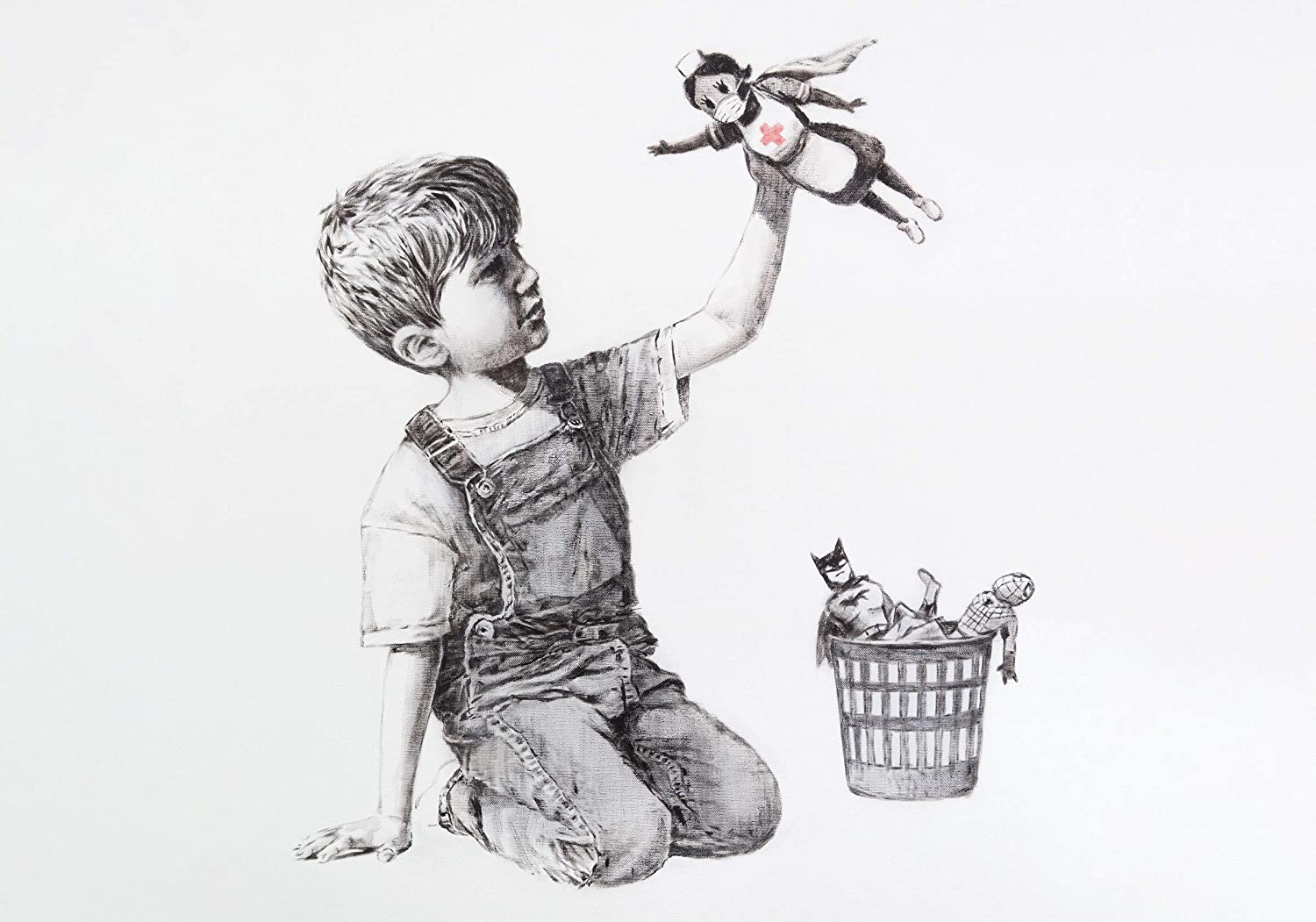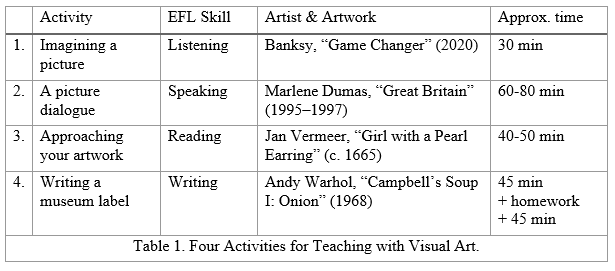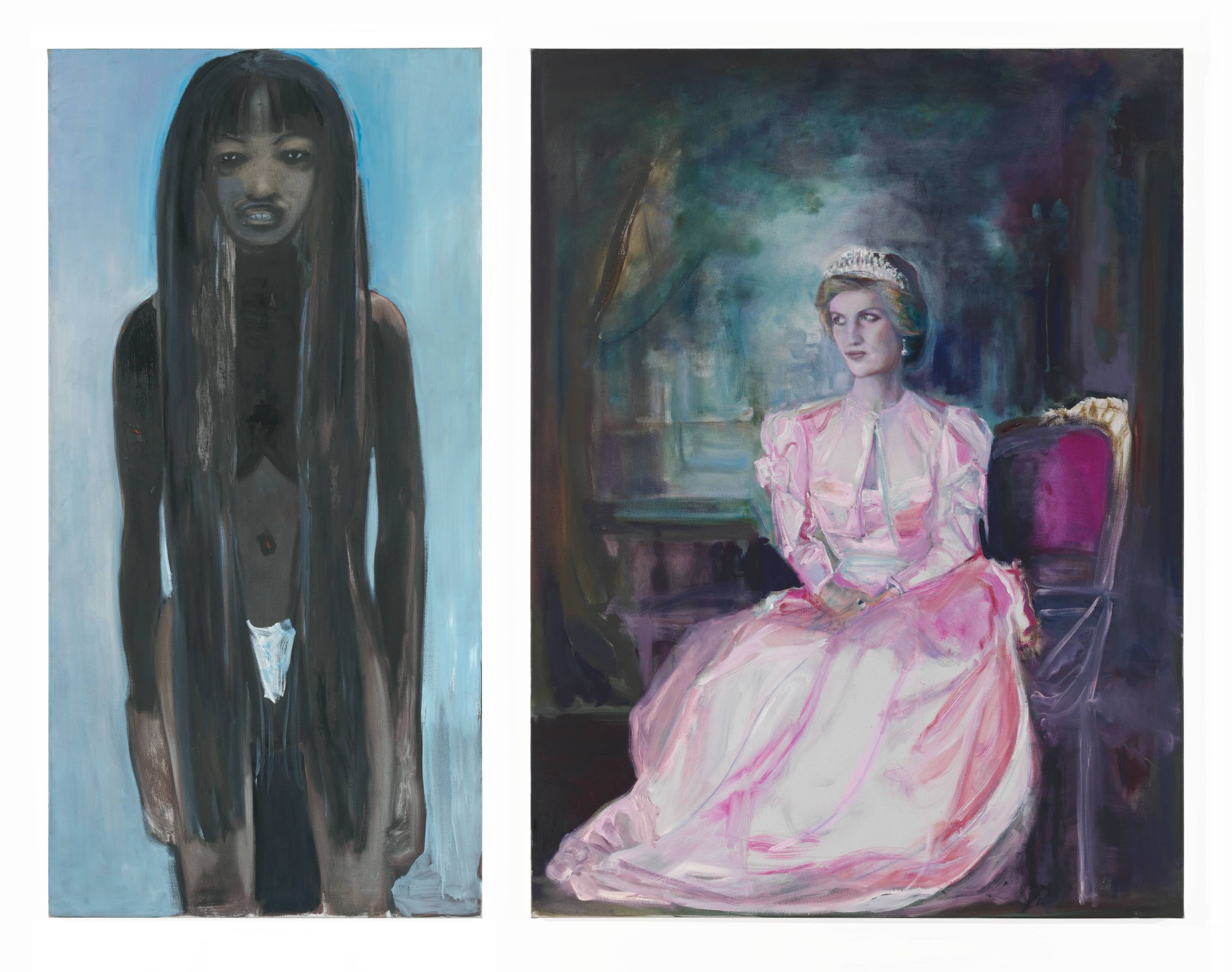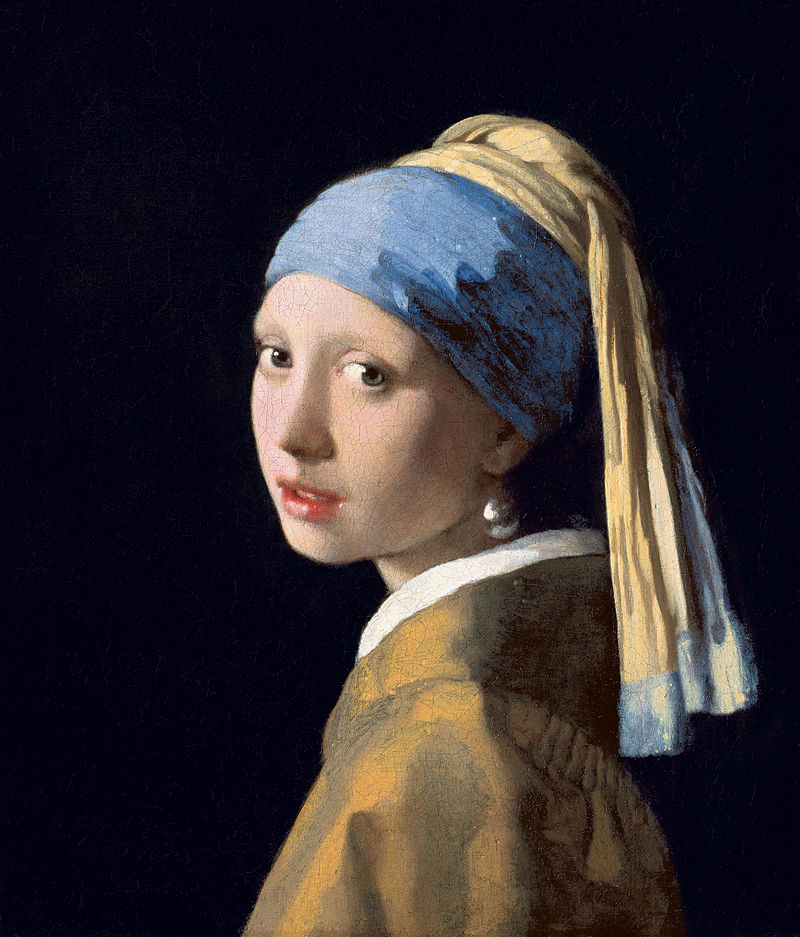Using Visual Arts as a Tool to Foster the Four Language Skills (original) (raw)
Luisa Alfes is currently teaching in the field of EFL education with a special focus on the value of literature and culture in the foreign-language classroom. Moreover, she focuses on other core issues, such as assessing learners of English, methods and approaches to EFL education, learner diversity and inclusion. The combination of her two subjects, English as a Foreign Language and Fine Arts, is a further research interest. Email: luisa.alfes@uni-due.de
Andreas Wirag has studied English and Spanish as foreign languages (for a teaching degree) at Albert-Ludwigs-Universität Freiburg i. Brsg. and worked as a teacher at grammar school and vocational school. He is currently a Postdoc researcher at the EFL Department of Georg-August-Universität Göttingen. As one of his research interests, he examines the use of the Arts to support L2 teaching and learning. Email: andreas.wirag@uni-goettingen.de
English through the Arts – A recent trend in EFL education
Without doubt, visual arts are a vital part of our daily lives. They offer rich and diverse dimensions of expressing the artist’s imagination and provide numerous possibilities for onlookers to engage with the artist’s products. Viewing this potential, EFL teachers have recently begun to include the visual (and other) arts into their teaching in an attempt to offer more creative, exciting, and meaningful lessons to their students. This newer trend in EFL education has been called ‘English through the Arts’, which pursues the aim of “integrating the arts and art-making into English language teaching and learning” (NYSED 2010: 2). Its development is visible from a recent growth in lesson plans, units, and activities that employ the arts as a foundation or springboard for EFL teaching (e.g., NYSED 2010, DFUE 2007–2019, Maley & Peachey 2015, Gehring 2017, C Group 2020). Here, for instance, Der Fremdsprachliche Unterricht Englisch, a major German EFL journal, clearly reflects this recent trend in earlier issues of the magazine: “Visual Literacy” (87 / 2007), “Graphic Novels” (117 / 2012), “Dramapädagogik [Drama Pedagogy]” (142 / 2016), “Creative Writing” (150 / 2017), “Music” (152 / 2018), and “Photography” (158 / 2019). Also, lesson ideas suggested by members of the UK-based C Group inform English through the Arts by including, for instance, music, drama, poetry, and other art forms into their teaching (cf. Maley & Peachy 2015).
Importantly, when discussing the arts in EFL instruction, their usage should not be confused with a purely decorative or ornamental function. As is well known, visual arts, illustrations, or photographs are frequently placed as central elements in students’ EFL textbooks. Although they populate the textbook, these images mostly have a serving function, while their communicative and cultural potential is not fully exploited. Hence, unless the visual arts are combined with meaningful tasks in the EFL classroom, they serve a merely decorative purpose in study materials, in which the power of the images is not taken full advantage of (cf. Hallet 2008: 212–213). Or, in other words, it is not enough to simply expose students to visual arts in the EFL classroom. Rather, learners should be allowed to intellectually engage with the artworks and to participate in meaningful discussions about them.
With this caveat in mind, this article suggests the use of visual art for EFL education and presents four short teaching activities for students. These activities combine (classical and contemporary) artworks with meaningful communicative tasks. Here, artworks, in combination with reading, writing, speaking, and listening tasks, are meant to offer “rich experiences in analysis, exploration, reflection, observation, imagination, experimentation, and communication” (NYSED 2010: 2) for EFL students.

Illustr. 1. Banksy, “Game Changer” (2020). Southampton General Hospital.
(Note: This picture is used in activity 1 below).
Why use visual art for EFL teaching and learning?
Before introducing the EFL activities, we would like to emphasise the didactic benefits that are typically attributed to visual art, or visual artworks, in the classroom. Artworks…
- will provide students with visual input rather than textual input only,so that different learner types can be addressed.
- seem to be inherently interesting to students due to their ubiquitous availability in students’ surroundings; this closeness to students’ lives may increase their motivation and willingness to participate in class.
- often visualise or mirror current political or social events (as in Banksy’s picture “Game Changer” above).
- often depict scenes of conflict, tragedy, or tension, taken from Greek mythology or from the bible. These tales are likely to capture the students’ interest.
- invite students to actively engage with classical and modern art; here, students will discover whether (or not) they find this experience enriching.
- serve as entry points to formal art institutions,such as museums, theatres, and concert halls. In other words, they may open up windows for students to engage with these important cultural institutions.
- can have a positive impact on several 21st century skills, such as “critical thinking” (analysis of the artwork), “flexibility” (engagement with others’ opinions), or “communication” (expression of one’s own understanding).
- foster the development of the students’ multiliteracy, or their ability to approach multimodal input, such as visual, oral, and written input.
- serve as valuable lesson material or lesson content, which allows for the training of a range of EFL skills (as shown in this article).
Using visual art to foster the four language skills
The following four teaching activities are divided in the following way: Activity 1 and 2 use the artwork itself as core content of the lesson in order to develop EFL listening and EFL speaking. In turn, activity 3 and 4 focus on exploring the origin and place of the artwork in art history to foster EFL reading and EFL writing.
As Table 1 shows, we matched each activity with a specific focus on one EFL skill. Accordingly, the four activities can be taught together to develop all four EFL skills, or individually to address one of the skills only. Since the four activities do not add up to a final product, there is no specific order in which they ought to be taught. However, since all EFL skills are interwoven in the development of a proficient L2 speaker, we suggest to use all four activities for students to fully benefit from the teaching.
Each of the four activities highlights one artist and his/her work in particular and approaches the artwork with a method taken from the didactics of Fine Arts. These artists and artworks are authentic examples of actual art-making and provide meaningful communicative input for the activities. Also, Fine Arts teachers are certainly experts when it comes to teaching visual modes in the foreign-language classroom. Not only students in Fine Arts, but also colleagues who teach other subjects can benefit from their visual competence (cf. Schoppe 2013: 26). This interdisciplinary approach supports the conscious perception of images and therefore strengthens students’ visual literacy. If artworks become a vital part of school education and are taught via methods that support students’ understanding of pictures, learners improve their visual literacies and hence are able to use these capabilities in everyday communication.
As the activities require learners to listen to and read texts for native speakers (with a dictionary), they are directed at students of level B1 and beyond. The following activities consist of both teaching guidelines and worksheets for students.

Activity 1: Imagining a picture (Focus: Listening)
Materials
Sound file (from a _YouTube_-video), transparency or video-image of Banksy’s picture “Game Changer”, worksheet (“Imagining a Picture”)
Example artist and artwork
Banksy, “Game Changer” (2020)
Description
For this task, students will listen to a sound file in which Banksy’s artwork “Game Changer” (2020)is described (YouTube: https://www.youtube.com/watch?v=zuo-OH6_ozI or “BBC news: Banksy gave a lovely picture for the NHS”). Here, the sound of the video should be played from 0:09–2:09, while the screen is turned off. Banksy’s picture depicts “a young boy, kneeling down wearing dungarees and a white t-shirt. The waste paper basket in front of him has two discarded old superheroes. Instead, he is playing with his new model figure; a new superhero – an NHS nurse with a flying cape and arm pointing forwards like superman” (cf. BBC News 2020). Banksy painted this picture as a tribute to the NHS staff during the Covid-19 pandemic and gave it to the University Hospital Southampton. After the lockdown, the picture will be auctioned off to raise money for the NHS.
The students will listen to the sound file twice: First, they listen for gist (“What does the speaker talk about?”). Then, the students will receive the worksheet “Imagining a Picture”. Second, they listen for details (“What exactly is shown in Banksy’s picture?”) and complete the worksheet with the help of the information from the second listening.
If you consider it necessary, explain the following words before the activity: “(to) unveil”, “dungarees”, “(to) discard”, “NHS nurse”, and “flying cape”.
Task info
Today’s activity is about the famous street artist Banksy and his picture “Game Changer”, from 2020, which is a tribute to the NHS during the Covid-19 pandemic. We will listen to a sound recording twice.
Instructions
- For the first listening, try to understand the general idea of the report. What does the speaker talk about?
- We will listen to the report again. This time listen for details. What exactly is shown in Banksy’s picture? Take notes.
- Now draw a sketch of the picture on the worksheet with the help of the information from the second listening. (While you do that, don’t look at your partner’s drawing).
- Compare your sketch to Banksy’s actual picture “Game Changer”. Talk to your partner: How does your sketch differ from the original picture?
- Can you find the student whose drawing most closely matches Banksy’s picture?
- Why do you think the picture is called “Game Changer”?
- (As a natural follow-up discussion, you might ask students how they have personally experienced the Covid-19 lockdown, or why they think Banksy’s picture is ‘worth’ more than a regular graffiti).
Activity 2: Picture dialogue (Focus: Speaking)
Materials
Computers or tablets, transparency or video-image of Marlene Dumas’ painting “Great Britain”(1995–1997), worksheet (“A Picture Dialogue”)
Example artist and artwork
Marlene Dumas, “Great Britain” (1995–1997)

Illustr. 2. Marlene Dumas, “Great Britain” (1995–1997)
Description
This activity is based on the idea that characters in portraits can be given a voice instead of remaining silent as painted figures. Marlene Dumas is a famous South African artist who focuses on portraying people: “She is fascinated not with what people look like but with who they are” (Spence 2014). In the activity, students are asked to imagine that Lady Diana and Naomi Campbell, both depicted in Dumas’ painting “Great Britain”(1995–1997), meet and talk about their public roles in Britain in the 1990s. Specific guiding questions serve as scaffolds for the students’ dialogues. The students receive the worksheet “A Picture Dialogue” at the beginning of the activity.
Task info
Lady Diana and Naomi Campbell are shown in Marlene Dumas’ painting “Great Britain” (1995–1997).
Instructions
- Do some research on the two women online. In particular, find out about their public roles in Britain in the 1990s. Compare online pictures of the two women to the way they are portrayed by Marlene Dumas. Are there differences? Take notes.
- Work with a partner. Each of you acts as one of the women in the picture. Imagine that the two women meet in the 1990s. What do they talk about?
- What would they say? Use these guiding questions as a support. Take notes about what your character might say. Write from your character’s perspective. Imagine how they feel and in what way they communicate those feelings_._
| Naomi Campbell | Lady Diana |
|---|---|
| Who is Naomi Campbell? What is she famous for? What makes her special? How is she seen by society? Why do you think she was portrayed by Marlene Dumas? | Who was Lady Diana? What was she famous for? Who was she married to? What did she fight for after her marriage? Why do you think she was portrayed by Marlene Dumas? |
- Practise your dialogue with your partner. Try to actually speak from the perspective of the woman you are representing.
- Present your dialogue to the class. Listen to the presentations and compare your ideas. Give feedback regarding the content and presentation elements (such as communication skills, body language, eye contact, etc.).
- After the dialogues, discuss the title of the painting.
- Also, discuss Marlene Dumas’ statement: “I don’t paint people, I paint images”.
Activity 3: Approaching your artwork (Focus: Reading)
Material
Computers or tablets, worksheet 1 (“Girl with Pearl Earring – fact sheet”), worksheet 2 (“Your artwork – fact sheet”)
Example artist and artwork
Jan Vermeer, “Girl with a Pearl Earring” (c. 1665)

Illustr. 3. Jan Vermeer, “Girl with a Pearl Earring” (c. 1665)
Task description
For the activity, students will browse an art history website which offers 1.5-to-2-page explanations of classical and modern paintings. Students will read the account for a painting of their choice (skimming and scanning) with the help of a dictionary. (If the terms “skimming” and “scanning” are unfamiliar to your students, please remind them before the activity). Before reading, students look at a model worksheet to give them a template to work from (1. “Girl with Pearl Earring – fact sheet”). While reading, students fill in their own worksheet about their artwork (2. “Your artwork – fact sheet”). The activity does not finish with a presentation, since it is focused on reading. However, after the reading, you may want to discuss new vocabulary that students have come across or difficulties they had during the reading.
Activity 4 can be used as a follow-up to activity 3, in which students write a museum label based on ‘their’ artwork and fact sheet.
Task info
Today’s activity is about discovering a famous painting from art history. A great website for art history is www.visual-arts-cork.com/site/paintings.htm. On it, you will find short, yet detailed explanations of many paintings.
Instructions
- Open the website www.visual-arts-cork.com/site/paintings.htm in your browser. Also, open a dictionary in another tab (e.g., www.oxfordlearnersdictionaries.com).
- Scroll down to the artist “Vermeer” and his famous painting “Girl with a Pearl Earring”. What is your first reaction to the picture? Describe the painting. Can you think of what her story is? Do you think the painting has a hidden message?
- Now take a look at this sheet (“Girl with Pearl Earring – fact sheet”). How does it relate to the information presented on the website? (Answer: It’s a summary account).
- Go back to the art history website and browse some paintings. To do that, you need to skim-read the explanations. Decide for a painting that really interests you or ‘speaks’ to you.
- Find your painting again on Google Images. Here, you will find a larger version which you can zoom into in order to take a closer look.
- Read the art website explanation of your painting again carefully. Use the dictionary tab to find out about difficult words. While reading, fill in the “Your artwork – fact sheet”. To find the right information, you need to scan-read the text.
- Differentiation for stronger students: Find out more about your painting and its artist on other websites and add interesting facts to your fact sheet.
Activity 4 – Writing a museum label (Focus: Writing)
Material
Worksheet (“Museum label”), transparency or video-image of Warhol’s painting “Campbell’s Soup I: Onion” (1968)
Example artist and artwork
Andy Warhol, “Campbell’s Soup I: Onion” (1968)

Illustr. 4. Andy Warhol, “Campbell’s Soup I: Onion” (1968)
Task description
For the activity, students will examine a museum’s label for a painting by Andy Warhol (“museum label”). They underline the label’s basic elements, which convey the central information to the museum visitor (e.g., artist, title, description, etc.). Then, they write a label for ‘their’ painting from activity 3. (Or, alternatively, students work directly from the art history website described in activity 3). As a homework, students tidy up, type and print their museum label. In the next lesson, they put up a print-out of their painting and its label to create an ‘art museum’ in the classroom. Finally, students visit their museum and comment on the exhibition.
Task info
Today’s activity is about making a museum label for your painting. A label is a small sign that is put up next to a painting to tell visitors about the artwork.
Instructions
- Take a look at Andy Warhol’s painting “Campbell’s Soup I: Onion” and its label. Share your thoughts about the artwork with the class.
- Underline all important parts in the label: Artist, date of birth & death, artwork title, artwork date, artwork material, description, meaning for art history, meaning for today’s visitors. Compare with the class.
- Write a museum label for your own painting. Make sure that the label has all the important parts. Work with your worksheet “Your artwork – fact sheet”. (Or, alternatively, from the website www.visual-arts-cork.com/site/paintings.htm).
- Homework: type the label, print it, and cut it out. Or else, make a hand-written label that looks neat and tidy. Also, print your painting from Google Images (if possible, in colour). Or else, ask a classmate to print out your painting.
- In the next lesson, put up your painting and label to the classroom wall. In class, create a space that feels like an actual museum. You could make sections for classical and modern art?
- Walk around the museum and take a look at the different paintings and labels. Do you agree with what today’s visitors see in these artworks? Share your thoughts with your classmates.
You can download the worksheets from the attachment section below.
References
BBC News (2020): Banksy gave a lovely picture for the NHS. Retrieved June 15, 2020, from https://www.youtube.com/watch?v=zuo-OH6_ozI
C Group (2020): Creativity for Change in Language Education. Retrieved June 15, 2020, from http://thecreativitygroup.weebly.com
Der Fremdsprachliche Unterricht Englisch / DFUE (2007–2019): Visual Literacy – Bilder verstehen (87), Graphic Novels (117), Dramapädagogik (142), Creative Writing (150), Music (152), Bilder lesen – Photography (158). Hannover: Friedrich Verlag.
Gehring, W. (2017): Mit den Künsten Englisch unterrichten.Bad Heilbrunn: Julius Klinkhardt.
Hallet, W. (2008): Die Visualisierung des Fremdsprachenlernens – Funktion von Bildern und visual literacy im Fremdsprachenunterricht. In: Lieber, G. (ed.), Lehren und Lernen mit Bildern.Baltmannsweiler: Schneider Hohengehren, 212–222.
Maley, A. & Peachey, N. (eds.) (2015): Creativity in the English Language Classroom. London: British Council.
New York State Education Department / NYSED (2010): Art as a Tool for Teachers of English Language Learners. Retrieved June 15, 2020, from https://research.steinhardt.nyu.edu/scmsAdmin/media/users/nbm3/art_tool.pdf
Schoppe, A. (2013): Bildzugänge,2nd edition. Seelze: Klett Kallmeyer.
Spence, R. (2014): Marlene Dumas Show at Stedelijk, Amsterdam.Retrieved June 15, 2020, from https://www.ft.com/content/8749a296-48ae-11e4-9d04-00144feab7de
Please check the Practical Methodology and English Language Development for Secondary Teachers courseat Pilgrims website.
Please check the Practical Ideas for Teaching Advanced (C1-C2) Students courseat Pilgrims website.
Please check the Enhancing Language Learning through Creativity course at Pilgrims website.
Please check the Creating a Motivating Environment courseat Pilgrims website.
Please check the CLIL for Secondary Teachers courseat Pilgrims website.